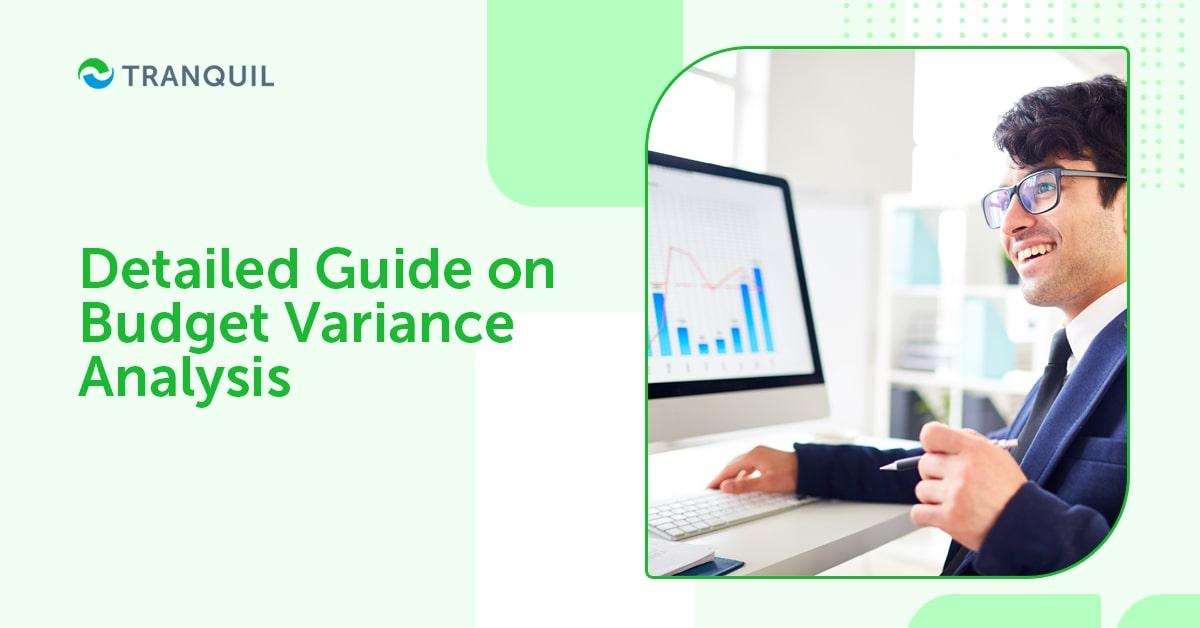
Before delving into budget variance analysis, let’s understand what business budgeting is all about.
For a business, budgeting means the process of creating and managing a financial document that contains the estimated earnings and expenses for a period, usually one year.
It is an important activity that helps businesses ensure that departments and employees have the requisite resources to carry out initiatives and achieve goals.
The money left over after subtracting expenses from the projected income is assigned to projects.
Previous budgets can be compared with actual allocation and performance to get a clear picture of how close the forecasts were to actual expenses.
ALSO READ: What is Job Costing?
If the budget overshoots, you need to find out the reason – whether the allocation itself was incorrect, or the project was executed inefficiently.
These insights can be used to improve the process the next time.
There are different types of budgeting that prioritize different factors, and each company has to select the one that suits its unique requirements.
ALSO READ: Guide on How Do ERP Systems Work

Budgeting is a complex activity where you need to pay attention to detail and make informed decisions regarding the allocation of funds.
Here is why it’s important:
ALSO READ: Inventory Reduction Strategies
Budgets can help a business stay on track, but don’t necessarily indicate the performance of an organization.
So how can that be established? By performing a budget variance analysis.
ALSO READ: Importance of Cash Book in Accounting
Budget variance analysis is a basic corporate performance management activity, and the application is an industry-standard.
Comparison of the budget with the actuals enables the assessment of organizational performance, and take remedial action to be successful.
Actual results are compared with budget values for that period, and the differences or variances if any, are analyzed.
Budgets are created to guide a business towards its goals, and hence, you must regularly measure how much the business stayed on track.
The comparison itself is simple, with the most critical data coming from the variance analysis.
Regardless of whether the results are positive or negative, the analysis is carried out.
If you’re using a flexible budget, you can adjust if there are changes in the assumptions you made during budget creation.
However, this is not possible in a static budget and can cause different results to happen when you perform a financial variance analysis.
ALSO READ: What is a Ledger in Accounting?

For any financial planning and analyzing process, one fundamental procedure is budgeting.
Variance analysis helps you investigate the differences between budgeted and actual, and see where your business exceeded expectations and where it fell below par.
Predictive budgeting can also be useful here.
The finance department may need to explain the causes for these variances.
Analyzing where your business performance fell short and where it exceeded expectations, you can learn to change your financial plan in the future according to the changed situation.
The finance department can quantify business performance and the organization’s financial health, giving management visibility into bottlenecks, victories, and new business opportunities.
Basically, you get to see what worked and what did not.
ALSO READ: What Do You Mean by Bank Reconciliation?
Researching each and every abnormal budget variance can be daunting and take up a lot of time, so you need to decide if a specific variance warrants investigation.
Regular variance analysis can help in the prevention of minor frauds, protecting your company’s finances.
Companies can measure their year-to-date performance and identify the initiatives and processes that caused a positive variance.
After conducting an actual variance analysis, management can identify what remedial measures should be taken.
They can take informed, data-driven actions to put the company on the fast track to greater success.
Mathematically speaking, this is a simple calculation.
Compare the actual results with the budgeted figures and find the difference in both values.
This is the most common approach, though there may be other methods.
You put the budgeted figures in one column, and the actual figures in the neighboring column, and note the difference in another column.
As it is mainly the sales values and cost values that are compared with the budget figures, this process is also called the sales and cost vs budget approach.
A short description is usually written to explain the budget variance.
ALSO READ: What Is an Inventory Control System?

Using spreadsheets can simplify your task of performing variance analysis.
You can also opt to choose Budget Variance Analysis Software from Tranquil which will consolidate your spreadsheets and save you the trouble of aggregating the data manually.
Collect all the relevant data and collate it in a single location, rather than leaving it in silos or disparate spreadsheets; that can cause difficulties in the variance analysis.
Doing this helps in streamlining the report generation and helps you have more control over the different data versions that may be created.
Normally data from various time periods are collected and stored together; you can then display the details more broadly, and detect trends.
The budget must be a part of this data package, as actual results will be compared with it.
ALSO READ: Why ERP User Interfaces are Important?
Pinpoint the budgeted amount; this is done using revenue and expenses for calculation.
Tranquil financial accounting software consolidates data and rapidly analyzes it, taking into consideration factors like gross profit, net income, cost of goods sold, and so on.
Then you need to calculate the actual results for the specific time period – annual, quarterly, or monthly, depending on how you have budgeted. You’re now ready to calculate the variance.
After getting all of your data in one place, you can make a template to calculate variance.
Put the budgeted figures for all data points you want to compare in one column, like sales, cost of goods sold, labor cost, etc.
Some businesses may have multiple revenue sources.
Here, the budgeted and actual numbers for all sources must be identified; the same rule applies to expenses as well.
Grouping all sales together might not help you identify which product is doing well and which is lagging.
It can happen that some products are exceeding expectations but others are lagging; hence, there may not be an overall impact in spite of individual variances being present.
ALSO READ: Benefits of Integrating E-Commerce and ERP
Before you begin analyzing, determine which variances really need looking into; is the time and effort spent in studying a variance going to be worth it?
A cost-benefit measurement of the time taken for the analysis can be done to set a materiality threshold.
Once these are implemented, you can start analyzing the different variances.
This part takes the most time and effort.
It is critical that the Finance team members undertaking this task are meticulous and diligent when they try to establish the root cause of each variance.
It would be a good idea to work with the different department managers to get an idea about what happened that could have caused the variance.

The next step is to combine all the different results into a unified report for the top management.
The report must comprise of the variances that were picked, and the underlying causes for all of them.
The remedial measures and suggestions to the management on necessary actions should also be included in the report.
The analysts conducting the variance analysis should be thorough and document everything.
They must be prepared to make a complete presentation and answer any query top management has for them.
ALSO READ: What is Landed Cost and How to Calculate It?
After identifying the actual values and developing trends, new information must be used to bring the financial models and the forecast up to date.
Forecasts must function like a compass that helps businesses reach their goals, and also monitor them to ascertain that they are on the correct path.
Ergo, forecasts must be updated for the information gained from the variance analysis, as well as the steps the management chooses to implement.
ALSO READ: What is Storage Cost of Inventory?
While financial variance analysis can be done manually, it can eat into your time, and be prone to errors. Implementing an ERP like Tranquil which has a robust financial management module can simplify matters for you. Besides helping you to budget and perform variance analyses, it can help you manage your finances much more efficiently. Do schedule a demo to know more, and we will be happy to explain everything.